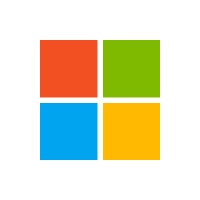Microsoft’s New Tools: A Digital Revolution in File Management and Work-Life Balance
October 11, 2024, 5:49 pm
In the fast-paced world of technology, Microsoft is making waves. The company is rolling out new features for OneDrive and Microsoft Teams. These updates aim to enhance productivity and promote a healthier work-life balance. Let’s dive into what these changes mean for users.
First, let’s talk about OneDrive. Microsoft is adding new search tools to streamline file retrieval. Imagine sifting through a cluttered attic. Now, picture a well-organized space where everything is labeled and easy to find. That’s the vision Microsoft has for OneDrive.
With the rise of remote work, quick access to files is crucial. Microsoft understands this urgency. Users can now filter search results by file type. Need a document? A spreadsheet? A presentation? Just click, and it’s there. Color-coded tags make it visually simple. No more guessing.
Additional metadata will provide context in search results. Users will see who created a file and who last edited it. This feature is like having a friendly librarian guiding you through a vast library. You’ll know exactly where to find what you need.
Another exciting addition is the location column. This tells users where files originated. Was it from a personal account or a shared group site? This clarity is essential in collaborative environments. A simple click takes you straight to the source. It’s efficiency at its finest.
Time is of the essence. The new date range filter allows users to search for files modified within specific periods. Want to find documents from the last week? No problem. This feature is like a time machine, letting you zoom in on the past.
Users can also limit their search area. They can choose to look through all files or just their personal ones. This customization is a game-changer. It’s like having a personal assistant who knows your preferences.
Microsoft will unveil more features on October 8, during the “Microsoft OneDrive: AI Innovations for a New Era of Work and Home” event. Anticipation is building. Users are eager to see how these innovations will further enhance their experience.
Now, let’s shift gears to Microsoft Teams. The platform is introducing new functionalities aimed at frontline workers. Companies can now manage employee schedules and track activities more effectively. This is a significant step forward in workforce management.
One of the standout features is the ability to warn or block employees from accessing work applications outside of working hours. Picture a digital gatekeeper. It ensures that employees don’t feel pressured to work during their personal time. This is a response to a growing concern: the blurring of work-life boundaries.
The reasons for this change are clear. Employees often seek compensation for work done outside of hours. Additionally, local laws may require restrictions on access to work applications during off-hours. Microsoft is stepping up to meet these needs.
When an employee attempts to access Teams outside of designated hours, they’ll see a warning. The visual of a fallen ice cream cone adds a touch of humor. It’s a gentle reminder that downtime is essential.
In 2023, Microsoft launched Windows 365 Frontline. This initiative aimed to provide part-time and shift workers with access to cloud-based desktops. Now, with the new Teams features, Microsoft is reinforcing its commitment to supporting frontline workers.
Administrators will have access to the Teams Admin Center. This allows them to customize settings in the “Shifts” app. They can plan employee activities, swap shifts, or adjust schedules. It’s like having a conductor orchestrating a symphony of productivity.
However, not all news is smooth sailing. Microsoft is also addressing outdated software. A new client for Teams will soon remind users to update their operating systems. Those on older versions of Windows 10 and 11 will see notifications starting October 15. It’s a nudge towards modernization.
In conclusion, Microsoft is reshaping the digital landscape. With new tools in OneDrive, file management becomes a breeze. Teams is prioritizing employee well-being, ensuring that work doesn’t encroach on personal time. These changes reflect a broader trend in the tech industry: a focus on user experience and work-life balance.
As we move forward, these innovations will likely set the standard for other companies. Microsoft is not just keeping pace; it’s leading the charge. The future looks bright for users who crave efficiency and balance in their digital lives. The journey has just begun, and the possibilities are endless.
First, let’s talk about OneDrive. Microsoft is adding new search tools to streamline file retrieval. Imagine sifting through a cluttered attic. Now, picture a well-organized space where everything is labeled and easy to find. That’s the vision Microsoft has for OneDrive.
With the rise of remote work, quick access to files is crucial. Microsoft understands this urgency. Users can now filter search results by file type. Need a document? A spreadsheet? A presentation? Just click, and it’s there. Color-coded tags make it visually simple. No more guessing.
Additional metadata will provide context in search results. Users will see who created a file and who last edited it. This feature is like having a friendly librarian guiding you through a vast library. You’ll know exactly where to find what you need.
Another exciting addition is the location column. This tells users where files originated. Was it from a personal account or a shared group site? This clarity is essential in collaborative environments. A simple click takes you straight to the source. It’s efficiency at its finest.
Time is of the essence. The new date range filter allows users to search for files modified within specific periods. Want to find documents from the last week? No problem. This feature is like a time machine, letting you zoom in on the past.
Users can also limit their search area. They can choose to look through all files or just their personal ones. This customization is a game-changer. It’s like having a personal assistant who knows your preferences.
Microsoft will unveil more features on October 8, during the “Microsoft OneDrive: AI Innovations for a New Era of Work and Home” event. Anticipation is building. Users are eager to see how these innovations will further enhance their experience.
Now, let’s shift gears to Microsoft Teams. The platform is introducing new functionalities aimed at frontline workers. Companies can now manage employee schedules and track activities more effectively. This is a significant step forward in workforce management.
One of the standout features is the ability to warn or block employees from accessing work applications outside of working hours. Picture a digital gatekeeper. It ensures that employees don’t feel pressured to work during their personal time. This is a response to a growing concern: the blurring of work-life boundaries.
The reasons for this change are clear. Employees often seek compensation for work done outside of hours. Additionally, local laws may require restrictions on access to work applications during off-hours. Microsoft is stepping up to meet these needs.
When an employee attempts to access Teams outside of designated hours, they’ll see a warning. The visual of a fallen ice cream cone adds a touch of humor. It’s a gentle reminder that downtime is essential.
In 2023, Microsoft launched Windows 365 Frontline. This initiative aimed to provide part-time and shift workers with access to cloud-based desktops. Now, with the new Teams features, Microsoft is reinforcing its commitment to supporting frontline workers.
Administrators will have access to the Teams Admin Center. This allows them to customize settings in the “Shifts” app. They can plan employee activities, swap shifts, or adjust schedules. It’s like having a conductor orchestrating a symphony of productivity.
However, not all news is smooth sailing. Microsoft is also addressing outdated software. A new client for Teams will soon remind users to update their operating systems. Those on older versions of Windows 10 and 11 will see notifications starting October 15. It’s a nudge towards modernization.
In conclusion, Microsoft is reshaping the digital landscape. With new tools in OneDrive, file management becomes a breeze. Teams is prioritizing employee well-being, ensuring that work doesn’t encroach on personal time. These changes reflect a broader trend in the tech industry: a focus on user experience and work-life balance.
As we move forward, these innovations will likely set the standard for other companies. Microsoft is not just keeping pace; it’s leading the charge. The future looks bright for users who crave efficiency and balance in their digital lives. The journey has just begun, and the possibilities are endless.

